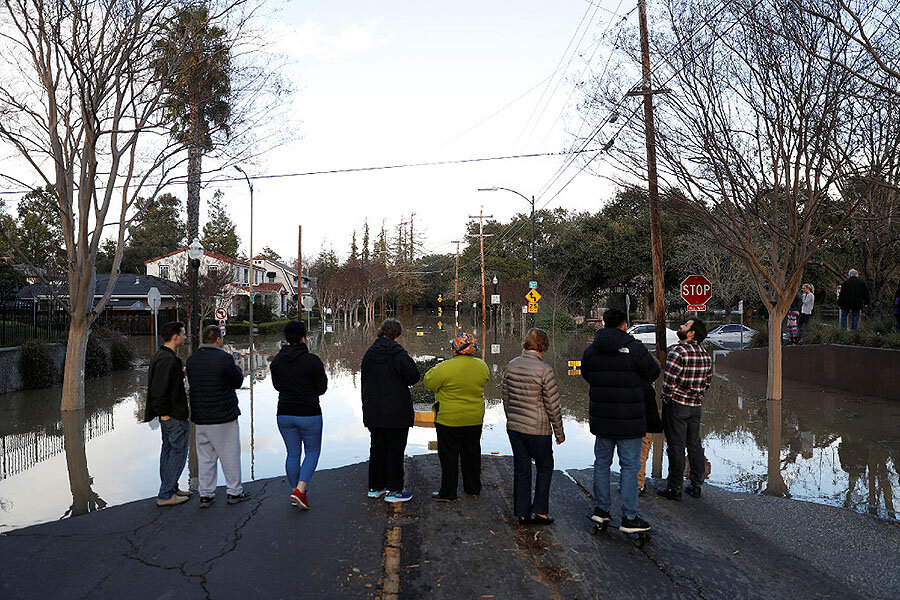Flood waters force thousands from homes in Northern California
Loading...
Hit by a once-in-100 years flood, more than 14,000 residents near the swollen Coyote Creek that runs through San Jose, Calif., were ordered to evacuate on Wednesday. However, many say they received little warning beforehand about the rising waters, which also temporarily shut down a portion of the 101 Freeway.
While some were able to return to their homes early Thursday morning as the water levels began to subside, an evacuation order remained for some parts of the city, a hub of high-tech Silicon Valley. Another 22,000 people near the creek were advised but not required to leave.
Though the city began alerting residents on Tuesday through social and mainstream media, sending emergency alerts to residents who had signed up for them, officials admitted Wednesday that they failed to foresee the severity of the flooding and therefore failed to provide proper warnings.
"If the first time a resident is aware that they need to get out of their home is when they see a firefighter in a boat, that's a failure," Mayor Sam Liccardo said at a news conference, according to the Associated Press. "We are assessing what happened in that failure."
After last weekend’s downpour filled the nearby Anderson Dam in Santa Clara County to capacity, sending water into Coyote Creek, the 30-mile-long waterway crested at a record-breaking 14.4 feet on Tuesday evening, surpassing its previous record of 12.8 feet in 1922, according to National Weather Service.
Late Wednesday, Assistant City Manager Dave Sykes said that officials' information on the creek's capacity had not been accurate, as The Los Angeles Times reported. Authorities expanded the mandatory evacuation order on Wednesday, with firefighters evacuating about 400 people from a low-lying residential area Tuesday night. Meanwhile, dam officials are working to reduce its levels to 68 percent capacity.
The flooding emergency comes as northern California is drenched in storms. According to the data collected by the National Oceanic and Atmospheric Administration, San Jose had 15.19 inches of precipitation from Oct. 1 through Wednesday, 143 percent of the average between 1981 and 2010. Last year, the city had received just 9.10 inches during the same period of time.
"Right now we are on pace to have the wettest water year on record," NWS forecaster Mike Kochasic told the SFGate on Jan. 5, referring to conditions in Northern California.
Some say these storms are the relief for many years of drought in the state, but the continuing storms have stood as a real-time test for aging infrastructure in the region. Earlier this month, municipal crews rushed to fix and reinforce the 50-year-old Oroville Dam's spillways, which had threatened to unleash waters. The problems forced nearly 200,000 people to leave their homes last week.
With more rains coming to San Jose this weekend, the flood warnings are in place until Saturday, and another storm is forecast for Sunday.
"Quite possibly we won't see a return to a flood this weekend because the [weather] system does not look terribly imposing," NWS forecaster Bob Benjamin told Reuters.
This report includes material from Reuters and the Associated Press.








